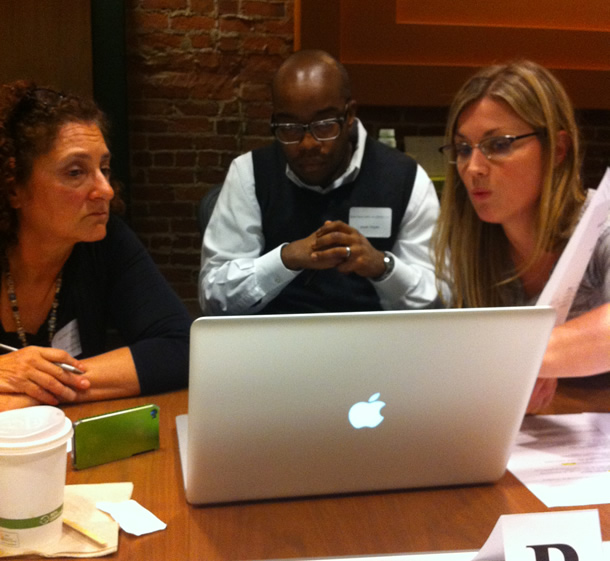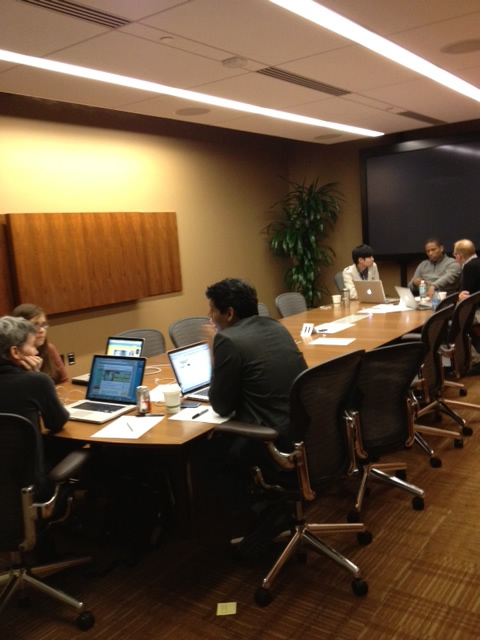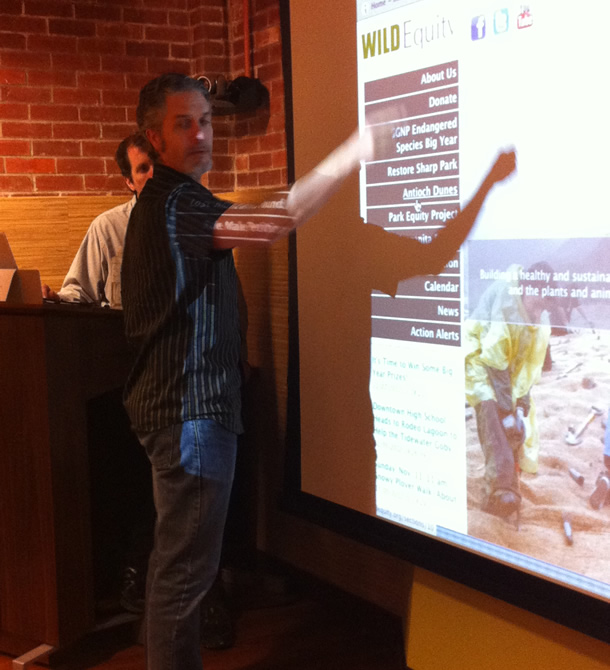
There are companies and organizations in our community that are struggling to improve life beyond the commercial sector. Most of them lack the expertise or the resources to improve their messaging or the usability of their products. Critical communication is lost in translation between the lines of their cluttered website. Their broken billing workflow is holding significant revenue hostage. A poorly designed engagement portal is deterring potential donors. What may come as second nature to you is not so obvious to the untrained eye, and the people trying to save the world are paying the price.
Here is the story of how I coupled my love for helping others with my passion for user experience to create a meaningful and lasting impact on both the nonprofit community and my career. The reach of your UX expertise is limitless and the benefits are sky high, so read on to learn how you can use your talents to make a difference on more than just the bottom line.
Rite of Passage into the World of UX Pro Bono
My own journey of UX enlightenment began with a seemingly simple conversation with my career coach. I was underutilized and wasn’t being challenged at work. I longed for my previous project manager position and didn’t hesitate to tell my coach. In return, she suggested I discover ways in which I could control my situation. The result cracked open my world and helped me find purpose.
She asked, “What are you missing from your old job and how can you incorporate that into what you’re doing today?” I knew the answer immediately. I missed running projects. I missed setting deadlines and schedules and collaborating with others to get things done. “But there’s something else,” she told me. “Every time you talk about giving back your face lights up.” And she was right. Even my friends noticed the bliss that volunteering offered me. But I didn’t work with nonprofits, I worked in user experience. So what could I do to connect these otherwise separate passions of mine without making a major career change?
My company, salesforce.com, donates 1 percent of our product to nonprofits, and 1 percent of revenue is fed back into the Salesforce Foundation in the form of grants and nonprofit funding. Also, every employee is encouraged to donate 1 percent of their time to organizations in need. It’s not uncommon for teams to paint playgrounds or feed the homeless as team-bonding activities. This 1/1/1 philosophy was ingrained in our company values early, which means years of evolution and a high rate of adoption among employees.
But I wanted to take it a step further. I enlisted the help of my colleague, Carol, our director of community and employee engagement. She’s on-point for connecting employees to pro bono and volunteer opportunities. Her expansive network proved invaluable when she introduced me to the nonprofit organization, Community Technology Network (CTN). CTN’s mission is to connect tech companies with the nonprofit world, and they were the perfect partner for what I had in mind for my first UX pro bono event.
We targeted November 8, which was World Usability Day, for our event. Our objective was to raise awareness of user research within the company and in the local nonprofit community. We decided to do so by volunteering our UX expertise to nonprofits that were lacking proper resources on staff. So in a celebration with usability professionals all over the world, my team provided fifteen nonprofits with feedback on how to make their websites more consumable.

Participants of the event were offered two tracks. The first track received targeted 2:1 feedback as a researcher and designer dissected the intricacies of the participants’ websites (see Figures 1 and 2). The second track was a large group setting in which seasoned directors and principal designers from my company facilitated open dialogue between nonprofits (see Figure 3). This allowed nonprofits to share their pain points and gain inspiration by hearing each other’s stories.

Our World Usability Day celebration was a success. The event was fulfilling for all parties on many levels. Nonprofits walked away with a better understanding of what wasn’t working and actionable suggestions on how to make improvements. Volunteers left with glowing, smiling faces. I was thrilled to be able to use my project management skills to organize an impactful and memorable event.
Pro bono work and skill sharing can also benefit a younger demographic. Students in early development years need just as much guidance as their adult counterparts. By teaching your craft to school-aged kids, your impact can be just as great, if not greater. You have the ability to inform and inspire a crowd which may very well choose a career in user experience.
The UX crew from salesforce.com found out just how impactful we could be in early 2013 when we led a week-long workshop for high school students in partnership with the Mayor’s Youth Employment and Education Program. Students spent their spring break at our offices learning about user-centered design processes. They then worked in teams of five to apply those methodologies and create designs and workflows for a mobile app. The week concluded with a friendly competition for “venture capitalist” funds, and the winning team walked away with $10,000 for real-life development of their apps.
Our workshop participants were hungry for knowledge and were the perfect target to share our passion with. Our UX team worked together to build a holistic curriculum and flexed our creative wings as we crafted messages for an atypical audience. Along the way, we provided real-world context to a group ready to use it as they embark on decisions that will impact their careers and the rest of their lives.
Benefits
Here are a few reasons why you should consider sharing your professional knowledge by joining forces with the underserved to make the world a better place:
- Growing through giving. Individuals trying to expand their methodology toolkit can do so by completing volunteer work for nonprofits and, in turn, receive solid UX experience that looks great on a resume. It’s a low-risk opportunity to try innovative and creative ways of doing work, and the benefits have the potential to favorably impact future employment.
- Those who teach, learn…about themselves. You can uncover hidden talents and passions by working outside the cubicle. Unlock your mind and get inspired by using familiar ideas in novel ways.
- Teams that volunteer together, stay together. Use pro bono work to bond with your team. Don’t hold back when recognizing each other’s strengths and talents. Volunteering together builds rapport and strengthens team dynamics. And if you are partnered with colleagues who are barriers to UX processes, you gain an excellent opportunity to further prove the value of UX in corporations. If your team works in multiple silos, here’s an opening for you to partner with colleagues you may not work with in your everyday life.
- It just feels good. When you were a child and first learned what a profession was, it’s likely you wanted to be a veterinarian, a doctor, or a firefighter. It’s a fact that helping others makes us feel good, and it’s something we recognize from an early age. When a challenge is resolved because you helped, your confidence is boosted and you’re regarded as a hero, a lifesaver, and a giver because you made someone’s life better. Those endorphins (and memories) don’t easily fade.
- Low cost, high impact. By using your existing skillset, the need for costly consulting is eliminated from the nonprofit budget sheet. A few hours of your time can save a struggling association thousands of dollars they can reinvest in other parts of their organization. A dollar saved goes a long way and, in return, you gain pride and a sense of fulfillment.
Techniques
The benefits of using your UX expertise to improve nonprofits are many. So what’s next? Identify an organization in need and regard their team as you would any new stakeholder. Build a relationship and establish trust by providing education on the methods and intricacies of your craft. You’re the expert and you’ll be regarded as such.
If you’re in need of some inspiration, below are a few ways you can make an impact. Some are long-term commitments, while others are short bursts. Before you commit, consider how much time you’d like to invest in your new venture. This will help you determine where to start. You may also find it more suitable to make contact with a nonprofit first and then decide together where your skills can best be used.
- Offer design or research “office hours.” Host an event during which you recruit a small group of nonprofit representatives and UXers from your team to help identify improvement areas. (Check out the blog entry from our World Usability Day celebration for tips on how to organize a successful event: bit.ly/NPOWorldUsabilityDay.)
- Lead a workshop. Teach youth the basics of product design by leading a day-long workshop demonstrating how to use user-centered design to build a new product.
- Provide a shadowing opportunity. Invite high school students to your office and allow them to shadow a usability test or a collaborative design workshop.
- Offer ongoing advice. Offer your expertise in a weekly or time-boxed consultancy commitment.
- Sponsor a lecture. Join forces with a technology nonprofit in your area to host a talk given by a leading UX practitioner, and open it to the public.
- Arrange a training session. Organize an event in which you educate your nonprofit customers on why design research is important. Or share with them the best practices used within your company.
- Speak at a nonprofit conference. Submit a proposal for a speaking engagement at a nonprofit conference and present on user-centered design best practices.
- Provide executive support. Sit on the directors’ board of a local nonprofit.
- Participate in a nonprofit hackathon. Use your coding skills to help the nonprofit community solve complex development problems. (Here’s an example of how you can provide your expertise in a nonconventional competition: bit.ly/NPOHackathon.)
Conclusion
With a little structure and some expectation setting, nonprofits and UX professionals can benefit greatly by joining forces. Before you embark on your journey to nonprofit enlightenment, remember that, as in any traditional business transaction scenario, you should be open and honest. Set the stage for success and align all parties from the start of your engagement to the finish. Because it is likely to be an extracurricular activity for you, establishing ground rules upfront will also help balance your time and manage expectations for the length of your volunteer assignment.
Pro bono work is fulfilling, joyful, and not limited to the confines of your professional talents. Volunteerism is translatable to many other skills you possess. Whether you use skills that were honed in the workplace or not, look inside yourself, follow your heart, and you will undoubtedly reap the benefits of altruism.培养乐于助人的性格,点燃您对 UX 的激情,最终能改变您的职业生涯,并在非营利社区产生一定影响。
本文将讨论一个人如何将自己乐于助人的性格与对 UX 的激情相结合,从而影响非营利社区和自己的职业生涯。您的 UX 专业知识能触及的范围是无限的,所能带来的好处是无穷的。了解如何发挥才能,在达成营利目的的 基础上进一步改变世界的益处和方法。只需要一点结构和一些期望设定,非营利组织和 UX 专业人员就可以通过结合两者的力量获得极大的好处。
文章全文为英文版타인을 돕기 위해서는 사랑이 필요합니다. UX에 열정을 더하세요. 그 결과는 여러분의 경력을 바꿀 수 있고, 비영리 공동체에 차이를 만들어낼 수 있습니다.
이 기사에서는 비영리 공동체와 자신의 경력에 영향을 미치고자 타인에 대한 지원 활동에 있어 UX를 향한 열정에 자신의 사랑을 연결시킨 사례가 소개됩니다. 여러분의 UX 전문성이 미치는 범위는 방대하며 그 장점은 매우 많습니다. 결론 그 이상에서 차이를 만들기 위해 자신의 재능을 활용하는 방법과 그 이점을 알아보세요. 소규모의 구조와 예상 가능한 환경만으로 비영리 단체와 UX 전문가는 한데 힘을 합침으로써 크게 이득을 볼 수 있습니다.
전체 기사는 영어로만 제공됩니다.Pegue o amor em ajudar os outros. Misture a paixão pela experiência do usuário. O resultado pode mudar sua carreira e fazer a diferença em uma comunidade sem fins lucrativos.
Este artigo ilustra como uma pessoa uniu seu amor por ajudar os outros com a paixão pela experiência do usuário para impactar uma comunidade sem fins lucrativos e a sua carreira. O alcance do seu conhecimento em experiência do usuário é ilimitado e os benefícios são imensos. Saiba mais sobre os benefícios e as técnicas para usar seus talentos para fazer a diferença em algo mais do que apenas o básico. Com um pouco de estrutura e certa definição de expectativa, organizações sem fins lucrativos e profissionais de experiência do usuário podem ter muitas vantagens ao unir forças.
O artigo completo está disponível somente em inglês他人を助けたいという強い思いをUXへの情熱と融合させよう。その結果、あなたのキャリアや非営利活動コミュニティに変化をもたらすことができる。
この記事では、他人を助けたいという強い思いとUXへの情熱を組み合わせ、非営利活動コミュニティと自身のキャリアに影響を与えた、ある専門家の経験を紹介する。UXの専門知識を活用してできることは無限にあり、そこから得られるメリットも非常に大きい。自身が持つ才能を活かして、ボトムラインだけではなくそれ以上の変化をもたらすためのテクニックやそのメリットを学ぼう。ちょっとした構造をつくり、期待される成果をある程度設定することにより、非営利団体とUXの専門家は、力を合わせて相互に多大な成果を得ることができる。
原文は英語だけになりますTome un poco de deseo de ayudar a los demás. Mézclelo con pasión por la experiencia de usuario. El resultado puede cambiar su carrera profesional y hacer una diferencia en la comunidad de organizaciones sin fines de lucro.
Este artículo examina la forma en que una persona unió su deseo de ayudar a los demás con su pasión por la experiencia de usuario para generar un impacto en la comunidad de organizaciones sin fines de lucro y en su carrera profesional. El alcance de sus conocimientos de experiencia de usuario no tiene límites y los beneficios son inconmensurables. Entérese de los beneficios y las técnicas para usar sus talentos para hacer una diferencia que vaya más allá de sus utilidades. Con un poco de estructura y expectativas claras, las organizaciones sin fines de lucro y los profesionales en experiencia de usuario pueden unir sus fuerzas y obtener grandes beneficios.
La versión completa de este artículo está sólo disponible en inglés
